undersea
Latest
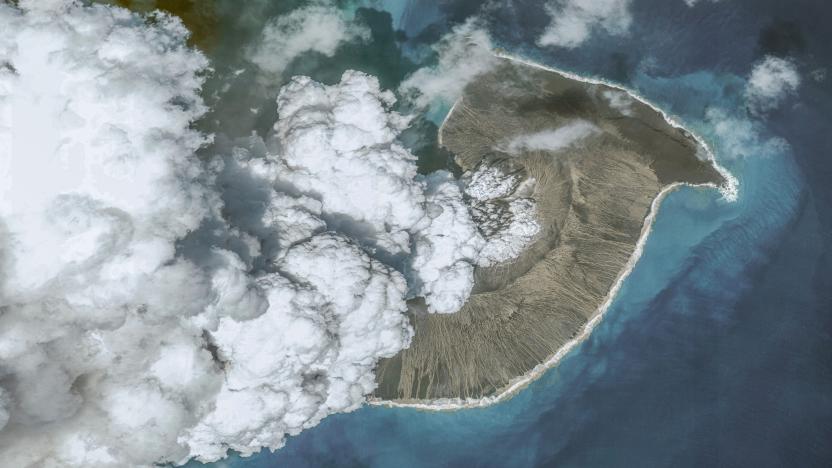
Tonga is back online after a five-week internet outage
Five weeks after a volcanic eruption and subsequent tsunami knocked out internet access on the archipelago, Tonga is once again connected to the web.
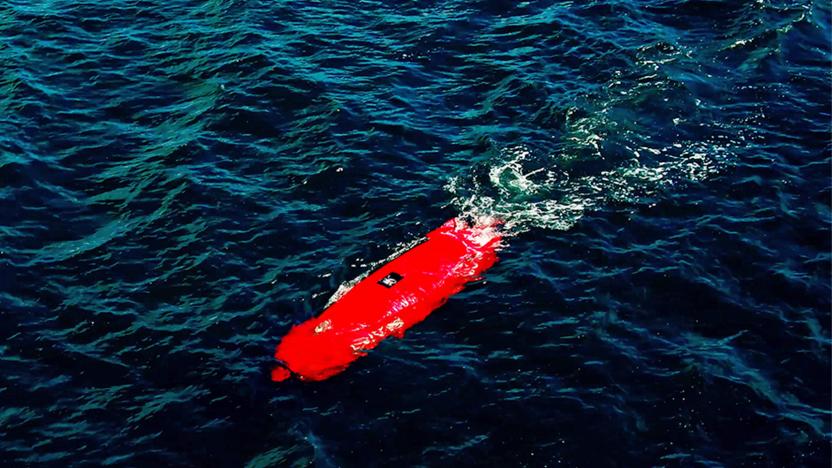
Palmer Luckey's startup bought an underwater drone company
Palmer Luckey's AI defense company Anduril is expanding to underwater drones by acquiring Dive Technologies.

Tonga's internet may be cut off for weeks following eruption
Tonga might not have internet access for weeks as its lone undersea cable was damaged following a volcano eruption.

Google’s Curie undersea cable now connects the US and Chile
Curie, a 10,500-kilometer-long undersea cable, now connects Google data centers in the US and Chile. Today, Google announced that the fiber optic cable has been successfully installed and tested. It is expected to begin transmitting data in the second quarter of 2020, and Google is already working on a branch into Panama.

Facebook wants to circle Africa with an undersea data cable
Facebook's quest to connect more of Africa may have it practically encircling the continent. Wall Street Journal sources maintain that Facebook is in talks to run an undersea data cable (nicknamed Simba -- yes, really) that would run around much of Africa. Details are few and far between, but it might link to existing beach access points in countries along the eastern, northern and western coastlines with the help of telecoms like MTN Group and Vodafone. This would help improve access to Facebook for more of the continent and might just lower the social network's data costs by cutting out in-between companies.
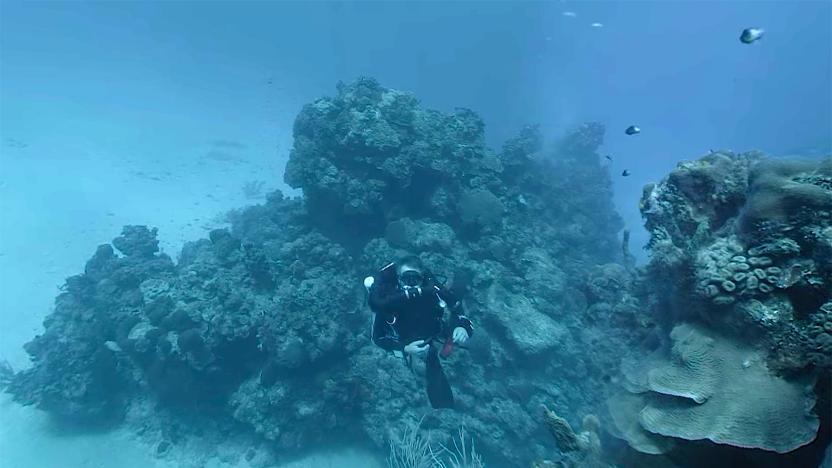
Hydrus VR camera brings immersive 8K video to the deep sea
Don't be surprised if you soon see VR video from some of the darker corners of the ocean. Marine Imaging Technologies has launched a new camera, the Hydrus VR, that promises 360-degree 8K video (higher-resolution than many current headsets) at depths of up to 984 feet, even in lighting conditions as dim as 0.004 lux. The 10-camera array takes advantage of new ultra-sensitive Sony sensors to capture video at up to ISO 409,600 -- the result will be noisy, but might be the key to spotting an elusive fish hiding in a cave.
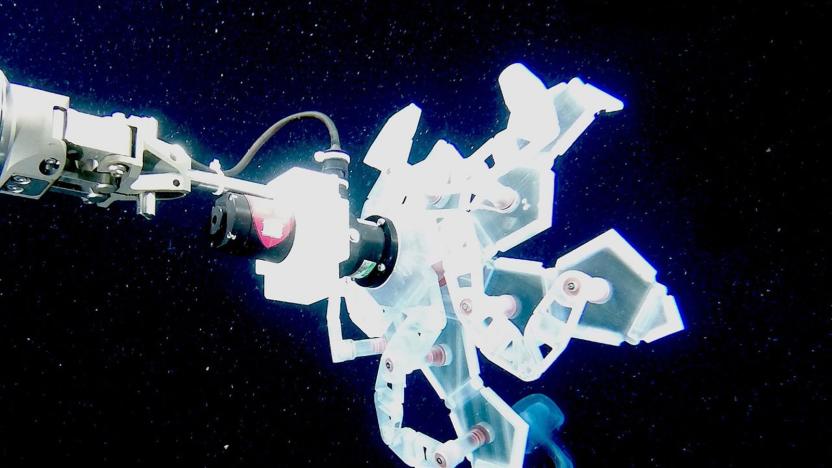
Harvard's robot arm can grab squishy sea animals without hurting them
As you might imagine, you can't just grab extra-soft sea creatures like jellyfish or octopuses when you want to study them. Not if you want them to remain intact, anyway. Thankfully, researchers at Harvard's Wyss Institute have a far more delicate solution. They've created a robot arm (the RAD sampler) whose petal-like fingers can quickly form a ball shape around an animal, capturing it without risking any harm. It's simpler than it looks -- it uses just a single motor to drive the entire jointed structure, so it's easy to control and easier still to repair if something breaks.

Google's latest undersea data cable will run from Virginia to France
Google has been involved in a number of undersea cabling projects in the past, including connections between Chile and Los Angeles, the US to Denmark and Ireland and Hong Kong to Guam. It also completed an undersea cable between the US and Japan in 2016. Now the company has announced a new private undersea venture to connect Virginia to France named after the founder of the Red Cross, Henri Dunant.

Internet cables connecting Channel Islands to UK cut by ship's anchor
It's easy to forget in this wireless world that much of the infrastructure that keeps Instagram feeds updating and WhatsApp conversations flowing is under the sea, with large cables carrying all that data from one place to another. Residents of the Channel Islands are being reminded of that fact today after three cables connecting the islands to the UK were severed yesterday, thought to be caused by a ship dragging its anchor across the English Channel.
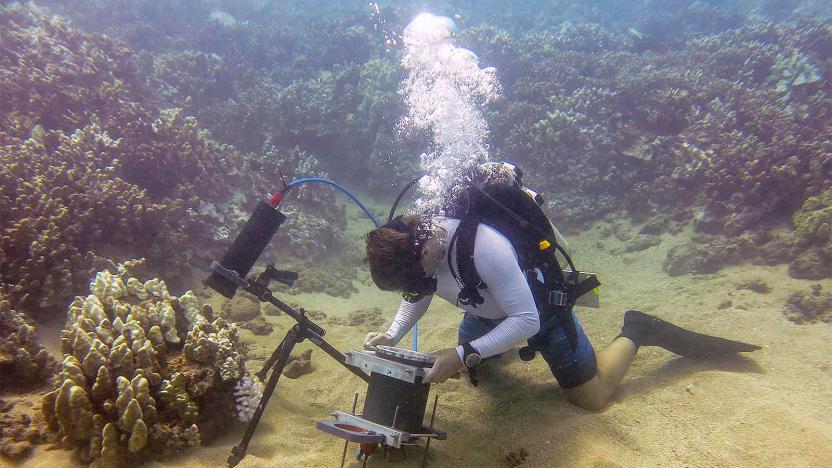
Underwater microscope offers a brand new look at sea life
Scientists have a hard time studying microscope sea life, and for good reason. Underwater scientific equipment can't study things at that scale, and bringing samples up to the surface frequently deprives them of that all-important natural context. Enter UC San Diego: its researchers have crafted the Benthic Underwater Microscope, the first undersea microscope that can study "millimeter-scale" activity in its native habitat. It combines a water-friendly computer with an imaging system that revolves around both a high magnification lens and a flexible, tunable lens that can see shapes in 3D. Combined with an LED ring light and fluorescence imaging, the system shouldn't be daunted by most water conditions or unusual specimens.

Saab built a robot to stop underwater terrorist bombs
The US isn't just worried about terrorist bombings above-ground -- it's concerned about bombs below the waves, too. To that end, it's working with Saab on a remotely-controlled underwater robot, the Sea Wasp, that's designed to deal with improvised explosives. The machine (a smaller take on the existing Seaeye) uses a mix of sonar and a manipulator arm to find, move and sometimes disable explosives. Its party trick is its sheer maneuverability. It can hover in virtually any position, helping it dispose of bombs even when they're attached to a ship's hull.

Undersea robots find key clue to a mysterious shipwreck
Robots just helped shed light on a maritime tragedy. The US Coast Guard, National Transportation Safety Board and Woods Hole Oceanographic have used both an autonomous underwater vehicle (AUV) and a fiber-controlled craft to find the voyage data recorder of the El Faro, a cargo ship that sank near the Bahamas during Hurricane Joaquin last October. That's no mean feat when its remains are 15,000 feet deep, and the recorder is roughly the size of a coffee can. The recovery should not only help explain the exact circumstances of the El Faro's final moments, but provide some closure to the families of the 33 crew members that lost their lives.

Watch a robotic snake swim eerily like the real thing
Don't be shocked if you see a mechanical snake swimming around undersea equipment in the near future... it (probably) isn't there to kill you. Eelume, Kongsberg Maritime and Statoil are building a robotic snake worker that will inspect (and occasionally fix) underwater gear. Robot snakes are nothing new, but this serpent is both production-ready and almost uncanny in how it moves. By itself, it slithers as if it's stalking prey. Throw in thrusters, however, and it's something else -- it can quickly twist around pipes as if they were only minor obstacles.

US worries Russia would cut undersea data cables in a conflict
Many military commanders will tell you that it's wise to cut the enemy's lines of communication. However, the US is concerned that Russia may take this advice one step too far. The New York Times understands that Russia is positioning submarines and spy ships near hard-to-reach segments of undersea data cables, hinting that it might sever internet connections in the event of a conflict. As you might gather, that would create serious problems for the world as a whole, not just Russia's enemies. Depending on the line, a cut could disrupt internet access (and thus economies) in countries that wouldn't even be involved in the fight.

Floating robots will find out what keeps the Indian Ocean healthy
Believe it or not, scientists don't know a lot about how the Indian Ocean works. Without many samples, researchers are frequently left in the dark about the ways that fish, plankton and other aquatic life flourishes in the area. That won't be a challenge for much longer, though. Australia's national science agency is launching a fleet of BioArgo robots that will measure both the biological and physical traits of the ocean to learn what makes it healthy. Much like the Argo machines studying Arctic waters, they'll float deep underwater (nearly 6,600 feet) and drift with the current. They'll usually need to surface only when they're transmitting their findings. Combined with satellite imagery, the BioArgo drones should give researchers a true "3-dimensional picture" of the Indian Ocean -- important when a sixth of the human population depends on this sea for basics like food and transportation.

Robotic vehicles find the Pacific Ocean's deepest thermal vents
Robotic underwater vehicles from the Monterey Bay Aquarium's Research Institute just helped discover one of the Earth's more elusive scientific treasures. Both an autonomous mapping craft and a remotely operated counterpart (which collected video and samples) traveled 12,500 feet to the bottom of Mexico's Pescadero Basin to find the Pacific's deepest hot hydrothermal vents. The machines achieved their feat in just two days, versus the years that it'd take for conventional undersea mapping -- and they achieved the kind of detail that would likely be difficult or impossible using those earlier techniques.

Microsoft pours money into undersea data cables
For many internet giants, undersea fiber optic cables are a lifeline. In some cases, it's the difference between delivering fast services overseas and watching people give up in frustration. Microsoft knows this all too well, it seems, as it just poured money into three subsea fiber projects (Aqua Comms, Hibernia and New Cross Pacific Cable Network) that should speed up connections to Asia-Pacific and Europe. The Redmond crew sees this as a small investment that could pay off big in the future. As it explains, online products like the Azure computing platform and Office 365 are booming -- it only makes sense to have those moneymakers running as smoothly as possible. This isn't really an altruistic gesture, then, but it could go a long way toward improving your internet access as a whole. [Image credit: US Pacific Fleet, Flickr]

Virgin Oceanic pauses its deep sea exploration plans
If you were hoping to see Virgin Oceanic visit the deepest parts of Earth's oceans, you'll have to put those dreams on hold. The company has confirmed that it's at least temporarily dropping plans to make five dives using its DeepFlight Challenger craft. Virgin isn't saying just what prompted the decision, but founder Sir Richard Branson alluded to a cancellation in August. He stressed the importance of "knowing when to change tack" and that Virgin Oceanic was "widening its focus" to work on more accessible ocean exploration. In short, DeepFlight wasn't panning out.

Google backs an undersea cable that will give the internet a big speed boost
The internet is quickest when you have a direct connection to the sites you're trying to reach, but that's a daunting challenge in the Pacific -- undersea network cables can cost hundreds of millions of dollars. It's therefore good to hear that Google and a host of telecom giants (China Mobile, China Telecom, Global Transit, KDDI and SingTel) are backing FASTER, a $300 million fiber optic cable that runs between Japan and the US. As the name implies, it's all about speeding up data transfers between Asia and the Americas; the cable should offer a whopping 60 terabits per second of bandwidth between the two regions, which makes even Google's gigabit home internet service look puny by comparison. You won't see the difference until FASTER is finished in the second quarter of 2016, but it promises to improve the internet as a whole when it's ready. Don't be surprised if foreign multiplayer games and video streams get noticeably smoother within a couple of years. [Image credit: US Pacific Fleet, Flickr]

US reportedly uses security agreements to intercept data from undersea fiber optic lines
The US government has clear incentives to safeguard against internet attacks coming through undersea fiber optic lines, but the Washington Post now hears that they're stretching the law to make this happen. The newspaper claims that federal agencies push foreign fiber operators into Network Security Agreements that, while public, are used for eavesdropping that isn't covered under their terms. In the case of an old deal with Global Crossing, the telecom firm had to allow short-notice government visits and even keep top executives in the dark. The FCC reportedly serves as the bargaining chip, delaying cable licenses until providers agree to the terms. Government officials maintain that their surveillance is legal, although that's cold comfort -- the New York Times and Wall Street Journal both allege that the Foreign Intelligence Surveillance Court has reinterpreted laws to let the NSA collect more information than it would otherwise. [Image credit: JL Hopgood, Flickr]




